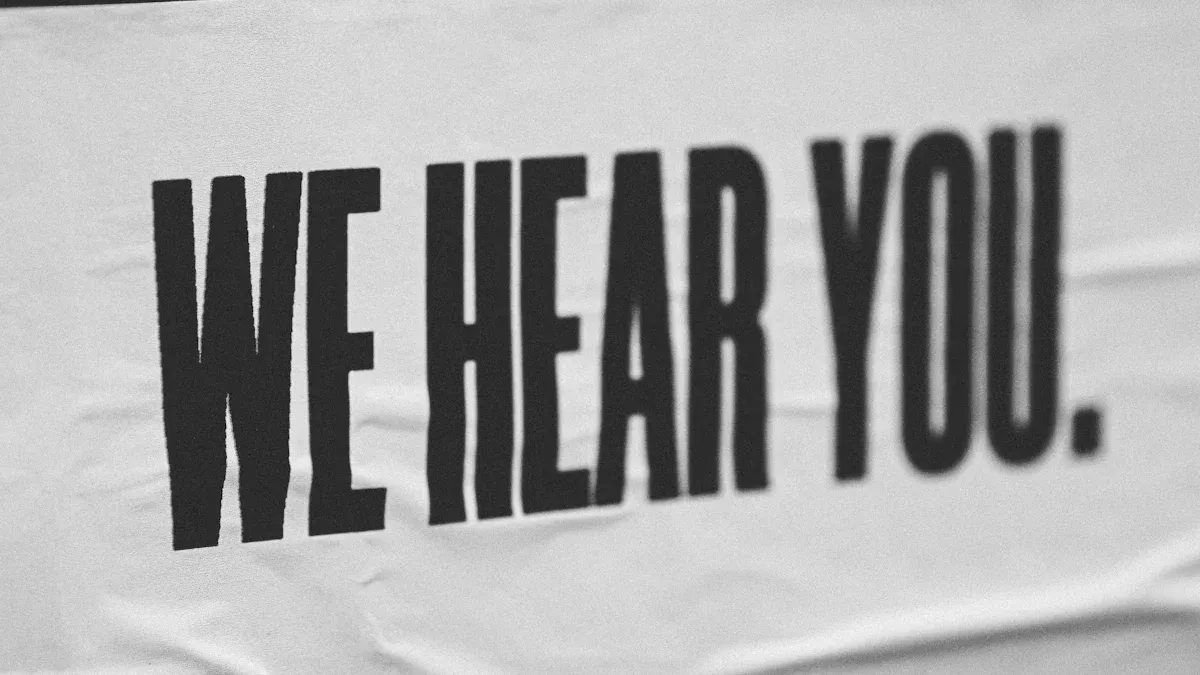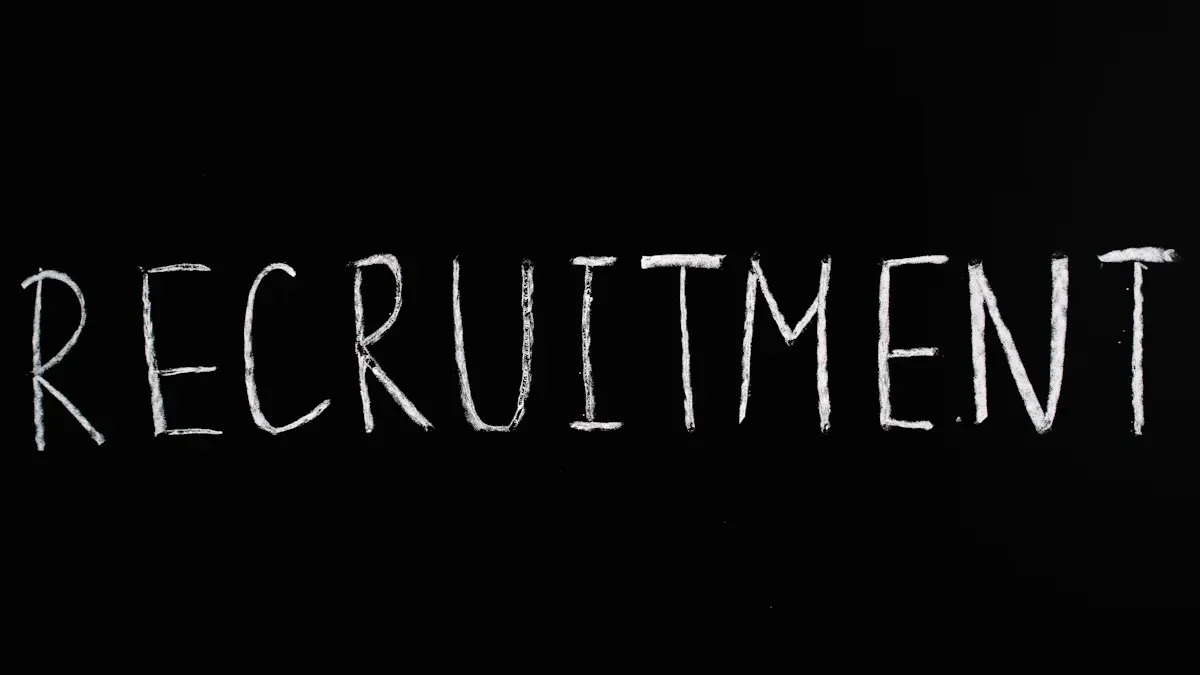Lessons Learned from Real Hiring Transparency Challenges

When you think about hiring, Hiring Process Transparency might not be the first thing that comes to mind, but it should be. Clear and open hiring practices build trust between you and your candidates. They also set the stage for ethical recruitment. Did you know that 80% of candidates say transparency is a key factor in deciding whether to accept a job? It’s not just about trust—it’s about reputation too. In fact, 78% of hiring managers believe Hiring Process Transparency enhances their company’s image.
But here’s the challenge: creating a transparent hiring process isn’t always easy. Many organizations struggle with entrenched biases, inconsistent messaging, or even an overwhelming amount of data. These hurdles can make it tough to deliver a positive candidate experience. Yet, when you prioritize Hiring Process Transparency, the results speak for themselves. Companies have seen a 50% drop in candidate withdrawal rates and a 40% boost in quality hires. That’s the power of doing things right.
So, why not make Hiring Process Transparency your hiring superpower? It’s a win-win for you and your candidates.
Key Takeaways
Write clear job descriptions to find the best workers and lower quitting rates.
Use planned interviews to be fair and avoid unfair judgments.
Talk openly with candidates to gain trust and make their experience better.
Look at what people can learn, not just what they know, to find more talent and include different backgrounds.
Use technology to make hiring clearer and faster.
Common Challenges in Hiring Process Transparency

Unclear Job Descriptions
Have you ever read a job description and thought, "What exactly is this role about?" You're not alone. Unclear job descriptions are a common issue in the hiring process. They often attract candidates who aren't the right fit, leading to mismatched expectations. Imagine applying for a role that promises creativity but ends up being all about data entry. Frustrating, right? This kind of misalignment can cause job dissatisfaction and even higher turnover rates. When employees feel misled, morale drops, and team dynamics suffer. Plus, companies waste time and resources on ineffective hiring processes.
The solution? Clarity is key. Clearly outline responsibilities, required skills, and expectations. When you provide this level of detail, you attract the right candidates and set the stage for a successful hiring process.
Inequities in Hiring Practices
Fairness in hiring is more than just a buzzword. It's a necessity. Yet, inequities in hiring practices still exist. Bias—whether conscious or unconscious—can creep into decisions, affecting who gets hired. For example, some organizations may favor candidates from specific schools or backgrounds, unintentionally excluding diverse talent. This lack of inclusivity not only limits opportunities for job seekers but also stifles innovation within the company.
To combat this, focus on hiring in the open. Use structured interviews and standardized evaluation criteria. These steps help ensure every candidate gets a fair shot, regardless of their background.
Poor Candidate Communication
Communication is the backbone of any relationship, including the one between you and your candidates. Unfortunately, poor communication during the hiring process is all too common. Here are some examples:
Nearly 70% of applicants expect feedback after interviews, but only 8% actually receive it.
Over a third of candidates rarely or never get comments on their applications.
A bad hiring experience makes 73% of job seekers less likely to use a company's products or services.
Ghosting candidates or leaving them in the dark creates frustration and damages your employer brand. Candidates may even share their negative experiences, deterring others from applying.
Want to fix this? Keep candidates informed at every stage. Share timelines, provide constructive feedback, and create opportunities for two-way communication. These small steps can make a big difference in building trust and maintaining interest.
Misaligned Expectations
Have you ever started a job and thought, "This isn’t what I signed up for"? Misaligned expectations during the hiring process can lead to situations like this. When employers and candidates aren’t on the same page, it creates frustration for everyone involved.
Here are some common ways expectations can go off track:
Attracting the Wrong Candidates: Misleading job descriptions often bring in applicants who don’t have the right skills.
Increased Turnover: Employees who feel misled about their responsibilities are more likely to quit.
Lower Employee Morale: When roles don’t match expectations, team dynamics and productivity take a hit.
Wasted Resources: Time and money get wasted when inaccurate job descriptions lead to poor hiring decisions.
So, how do you fix this? Start by crafting job descriptions that focus on what really matters. Instead of listing every possible skill, highlight the core responsibilities and measurable outcomes. For example, if you’re hiring a project manager, emphasize their role in delivering projects on time and within budget rather than requiring expertise in every project management tool. This approach not only attracts the right talent but also helps candidates see how they can contribute to your goals.
Another tip? Align your hiring team on what the role truly entails. When everyone interprets the job responsibilities the same way, you reduce miscommunication and streamline the process. This consistency can even cut your time-to-hire by 20% and boost offer acceptance rates by 15%.
Finally, think about the bigger picture. Define the "DNA" of the role—how it fits into your company’s long-term needs. When you align job descriptions with your company’s values and goals, you create a better experience for candidates. They’ll feel more connected to your mission, and you’ll attract people who genuinely want to be part of your team.
Misaligned expectations don’t just hurt candidates—they hurt your business too. But with a little effort, you can bridge the gap and set everyone up for success.
Lessons Learned from Real-Life Hiring Challenges
Adopting a People-First Approach
A people-first approach in hiring focuses on treating candidates as individuals, not just resumes. This mindset prioritizes their well-being and creates a more human-centered hiring process. Companies like Marriott International and SAS have set great examples. Marriott’s commitment to employee well-being dates back to the Great Depression when they hired a staff doctor. Today, their holistic programs continue to win awards. SAS, on the other hand, offers in-house daycare and flexible hours, leading to low turnover and high satisfaction.
Wildbit also embraced this approach by crafting transparent job descriptions and engaging candidates through FAQs. This clarity helped candidates better understand the role and provide meaningful responses. As a result, Wildbit hired a strong candidate who might have been overlooked otherwise.
Why does this matter? A people-first approach can boost productivity by 22%, reduce absenteeism by 41%, and improve customer satisfaction by 30%. When you prioritize candidates’ needs, you create a hiring process that benefits everyone.
Encouraging Open and Honest Dialogue
Open and honest dialogue builds trust and sets the tone for hiring in the open. Companies like Buffer and GitLab lead the way with radical transparency. Buffer publicly shares salary ranges, attracting diverse candidates and fostering trust. GitLab takes it further by publishing a handbook detailing their hiring process. This helps candidates prepare and feel confident.
DHL Aviation also practices transparency by sharing internal promotion statistics. This gives candidates realistic expectations about growth opportunities. Tools like the 360Reach Personal Brand Survey can also encourage dialogue by providing candidates with insights into their strengths.
When you communicate openly, you empower candidates to make informed decisions. This transparency enhances their experience and strengthens your employer brand.
Practicing Compassionate Rejection
Rejection doesn’t have to be harsh. Compassionate rejection practices can turn a disappointing moment into a positive experience. Personalized rejection emails, constructive feedback, and professional development resources show candidates you value their time and effort.
These practices do more than soften the blow. They build trust, foster relationships, and even turn rejected candidates into brand advocates. Long-term, this approach enhances your employer brand and gives you a competitive edge in the job market.
Think about it: a candidate who feels respected, even after rejection, is more likely to recommend your company to others. Compassionate rejection isn’t just kind—it’s smart hiring.
Emphasizing Accountability in Hiring
Accountability in hiring isn’t just a buzzword—it’s a game-changer. When you hold your hiring team accountable, you create a process that’s fair, consistent, and results-driven. But what does accountability actually look like in practice? It’s about setting clear expectations, tracking progress, and owning the outcomes.
One way to emphasize accountability is by using measurable hiring metrics. For example, Kinetik, a forward-thinking organization, implemented a data-driven approach to hiring. They tracked key metrics like time-to-hire, offer acceptance rates, and candidate dropout rates. The results? They reduced their time-to-hire by 20%, increased offer acceptance rates by 15%, and cut candidate dropout rates by up to 40%. These improvements didn’t just streamline their process—they also boosted the quality of their hires and improved long-term retention.
Tip: Start small. Identify one or two metrics that matter most to your hiring goals, like time-to-fill or candidate satisfaction. Use these as benchmarks to evaluate your team’s performance.
Accountability also means creating a culture of ownership. Encourage your hiring managers to take responsibility for their decisions. Did a candidate drop out because of poor communication? Own it, learn from it, and improve. When everyone on your team feels responsible for the hiring experience, you’ll see better results.
Finally, transparency plays a big role in accountability. Share your hiring goals and progress with your team. Celebrate wins and address challenges openly. This not only builds trust but also motivates your team to stay aligned with your hiring objectives.
When you prioritize accountability, you don’t just improve your hiring process—you build a stronger, more reliable team. And that’s a win for everyone.
Actionable Strategies to Improve Hiring Transparency

Enhancing Communication at Every Stage
Good communication can make or break your hiring process. When you keep candidates informed, they feel valued and respected. Start by setting clear expectations early. Let candidates know what to expect at every stage of the hiring process. For example, share timelines and be upfront about job requirements. This avoids misunderstandings and builds trust.
Don’t stop there. Personalize your communication. A simple, tailored message can make candidates feel like more than just another application. Offer constructive feedback, even if they don’t get the job. Highlight their strengths and suggest areas for improvement. This small gesture can leave a lasting positive impression.
Amazon nailed this by using employee-generated videos to showcase their values. These videos resonated with younger candidates and boosted engagement. One video aimed at filling 300 positions was viewed over 70,000 times, significantly increasing clicks on their jobs page.
Finally, maintain open communication during onboarding. Check in with new hires to ensure they feel supported. When you prioritize communication, you create a hiring process that candidates will appreciate.
Shifting Focus to Potential Over Existing Skills
Focusing on potential instead of just existing skills can transform your hiring strategy. It opens the door to diverse candidates who might otherwise be overlooked. Traditional markers like years of experience don’t always predict success. Instead, look for transferable skills and a willingness to learn.
Many companies are already shifting in this direction. Between 2017 and 2019, nearly half of middle-skill positions and a third of high-skill roles reduced degree requirements. This trend accelerated during the pandemic, proving that potential often outweighs pedigree.
You can start by crafting job descriptions that focus on core responsibilities rather than an exhaustive list of skills. This approach not only attracts a broader talent pool but also reduces time-to-hire by 20% and increases offer acceptance rates by 15%.
When you hire for potential, you’re not just filling a role—you’re investing in long-term growth.
Promoting Diversity and Inclusion in Hiring
Diversity and inclusion aren’t just buzzwords—they’re essential for a thriving workplace. Start by aligning your hiring process with your company’s values. Define clear diversity goals and track your progress. For example, Sodexo focuses on gender parity, with 37% of its executive committee being women. This led to a 4% boost in employee engagement and a 23% increase in profit.
Technology can also help. Use tools like blind resumes and interviews to reduce bias. Train your hiring team to recognize and overcome unconscious bias. Engage diverse employees in the hiring process to ensure inclusivity.
The benefits are undeniable. Diverse teams perform 12% better, and companies with strong diversity ties see up to a 19% revenue increase. By promoting diversity, you’re not just improving your hiring process—you’re building a stronger, more innovative team.
Leveraging Technology for Transparent Hiring Practices
Technology has become a game-changer in making hiring more transparent. It’s not just about speeding up the process—it’s about creating trust and fairness for everyone involved. So, how can you use technology to improve transparency in your hiring practices? Let’s break it down.
AI-Powered Tools: Artificial intelligence can simplify hiring in ways you might not expect. For example, AI can anonymize resumes, removing names and other identifiers to reduce bias. It can also generate clear, consistent communication for candidates, keeping them informed at every stage. But here’s the key: be upfront about using AI. Candidates appreciate transparency, and knowing how AI is involved builds trust.
Behavioral Assessments: Companies like Siemens have adopted standardized behavioral assessments to evaluate candidates. These tools ensure fairness by focusing on skills and behaviors rather than subjective opinions. The result? A more objective and inclusive hiring process.
Transparent Salary Policies: Buffer has taken transparency to the next level by publicly sharing salary ranges. This approach not only widened their applicant pool but also reduced employee turnover by 75%. When candidates know what to expect, they’re more likely to trust your organization.
Tip: Use technology to showcase your company culture. Did you know that 64% of job seekers prioritize culture over salary? Tools like employee-generated videos or virtual office tours can give candidates a glimpse into your workplace values. Patagonia, for instance, openly communicates its commitment to sustainability during hiring, attracting like-minded talent.
Public Hiring Resources: GitLab sets a great example by publishing a public handbook detailing their hiring process. This transparency simplifies the application process and aligns candidates with their values of collaboration and openness.
Even small steps can make a big difference. For instance, DHL Aviation shares internal promotion statistics, showing candidates their growth opportunities. This kind of openness sets realistic expectations and strengthens trust.
When you leverage technology thoughtfully, you’re not just improving efficiency—you’re creating a hiring process that candidates respect and appreciate. And that’s a win for everyone.
Transparent hiring practices lay the groundwork for trust and ethical recruitment. They help you build stronger connections with candidates while enhancing your employer brand. By addressing challenges like unclear communication and misaligned expectations, you create a hiring process that’s fair and effective. Companies like Patagonia and Buffer show how transparency reduces turnover and improves satisfaction. Long-term, you’ll see benefits like better candidate experience, a more inclusive workplace, and stronger team alignment. When you prioritize transparency, you’re not just hiring—you’re building a culture of trust and success.
Key Takeaway: Clear communication and realistic expectations foster trust, attract ideal candidates, and reduce turnover.
FAQ
What does hiring transparency mean?
Hiring transparency means being open and honest about your process. It includes sharing job expectations, timelines, and feedback with candidates. This approach builds trust and improves the overall experience for everyone involved.
Why is hiring transparency important?
It creates trust between you and your candidates. Transparent practices also enhance your reputation, attract better talent, and reduce turnover. When candidates know what to expect, they feel more confident and valued.
How can you improve communication during hiring?
You can improve communication by keeping candidates informed at every stage. Share timelines, provide feedback, and personalize your messages. Clear communication shows respect and helps candidates stay engaged.
What role does technology play in hiring transparency?
Technology simplifies the process and ensures fairness. Tools like AI can anonymize resumes, while platforms like video interviews make the process more accessible. Transparent tools also help candidates understand your company better.
Can hiring transparency help reduce bias?
Yes, it can. Practices like blind resumes and structured interviews promote fairness. When you focus on skills and potential, you create a more inclusive hiring process that benefits everyone.
See Also
Improving Recruitment Clarity Through Applicant Tracking Systems
Utilizing AI For Fairness In The Hiring Process
Overcoming Language Challenges With Applicant Tracking Systems
Ten Strategies To Optimize Your Hiring Process Using ATS
Unlocking Industry Success With Applicant Tracking System Insights
From recruiting candidates to onboarding new team members, MokaHR gives your company everything you need to be great at hiring.
Subscribe for more information

